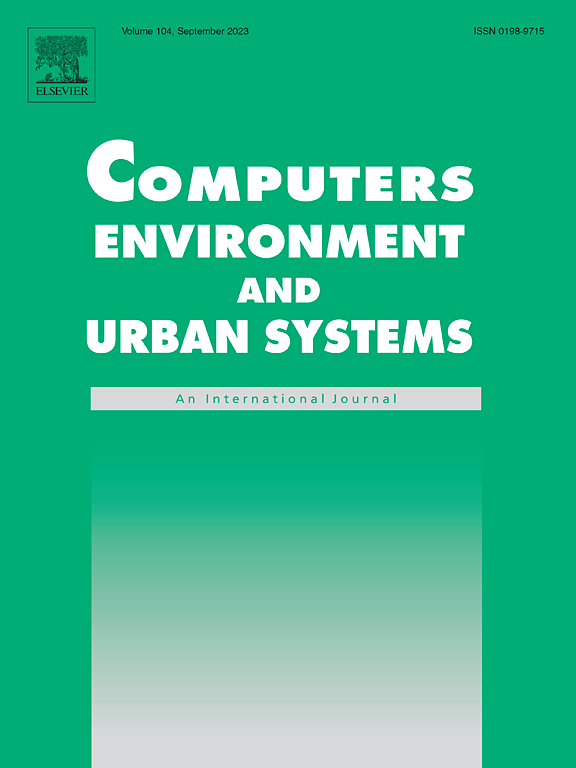Modeling spatial and temporal urban environmental noise using street view imagery and machine learning
IF 8.3
1区 地球科学
Q1 ENVIRONMENTAL STUDIES
Computers Environment and Urban Systems
Pub Date : 2025-07-11
DOI:10.1016/j.compenvurbsys.2025.102327
引用次数: 0
Abstract
This study proposes a framework for modeling environmental noise pollution by integrating land use regression (LUR) with machine learning models and street built environments. Using noise data collected from 128 locations over nine consecutive days in Mississauga, Ontario, Canada, the research demonstrates that incorporating finer-scale street built environment features derived from street view images significantly improves noise prediction accuracy. The model using XGBoost and street view-derived variables significantly outperforms traditional LUR-based models. The results indicate that street-level characteristics, particularly terrain, play a critical role in modeling noise levels, complementing traditional land use and NDVI-based greenness. Furthermore, the research highlights the importance of using non-linear models like XGBoost to capture complex relationships between noise and urban features. This approach offers valuable insights for advancing environmental noise modeling, which further supports future public health studies investigating the impact of noise exposure on population health.
利用街景图像和机器学习建模时空城市环境噪声
本研究提出了一个将土地利用回归(LUR)与机器学习模型和街道建筑环境相结合的环境噪声污染建模框架。通过对加拿大安大略省密西沙加市128个地点连续9天收集的噪声数据进行分析,研究表明,结合来自街景图像的更精细尺度的街道建筑环境特征,可以显著提高噪声预测的准确性。使用XGBoost和街景衍生变量的模型明显优于传统的基于lur的模型。结果表明,街道水平特征,特别是地形,在模拟噪声水平方面起着关键作用,补充了传统的土地利用和基于ndvi的绿化。此外,该研究强调了使用像XGBoost这样的非线性模型来捕捉噪音和城市特征之间复杂关系的重要性。该方法为推进环境噪声建模提供了有价值的见解,进一步支持未来调查噪声暴露对人口健康影响的公共卫生研究。
本文章由计算机程序翻译,如有差异,请以英文原文为准。
求助全文
约1分钟内获得全文
求助全文
来源期刊

Computers Environment and Urban Systems
Multiple-
CiteScore
13.30
自引率
7.40%
发文量
111
审稿时长
32 days
期刊介绍:
Computers, Environment and Urban Systemsis an interdisciplinary journal publishing cutting-edge and innovative computer-based research on environmental and urban systems, that privileges the geospatial perspective. The journal welcomes original high quality scholarship of a theoretical, applied or technological nature, and provides a stimulating presentation of perspectives, research developments, overviews of important new technologies and uses of major computational, information-based, and visualization innovations. Applied and theoretical contributions demonstrate the scope of computer-based analysis fostering a better understanding of environmental and urban systems, their spatial scope and their dynamics.
 求助内容:
求助内容: 应助结果提醒方式:
应助结果提醒方式:


